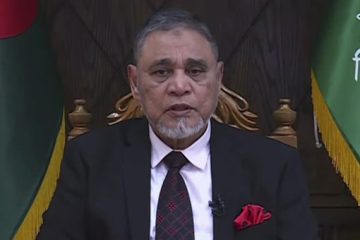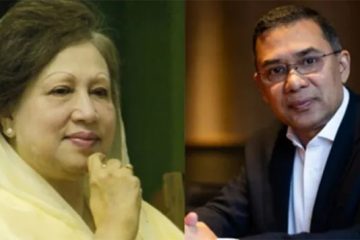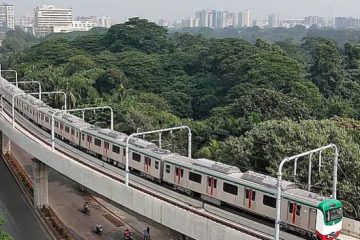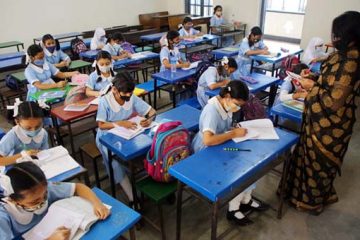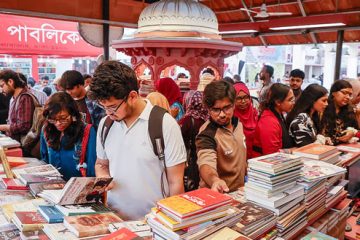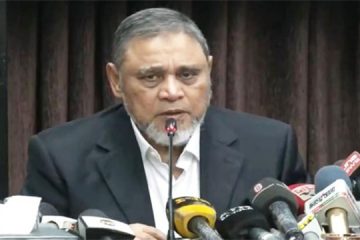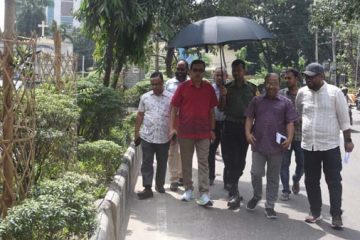Bangladesh has made remarkable progress in reducing poverty from 2000 to 2010 as poverty has declined by 1.7 percentage points per year. The country witnessed steady and continuous decline in the number of underprivileged over the decade-from nearly 63 million in 2000 to 47 million in 2010.Despite a growing population, the number of poor people declined by 26 per cent in 10 years. The series of external shocks that affected Bangladesh in 2007 and 2008 did not significantly slow down the speed of poverty reduction.
A new World Bank (WB) report ‘Bangladesh Poverty Assessment: Assessing a Decade of Progress in Reducing Poverty, 2000-2010’ launched at a hotel on Thursday says during the period 2000-2010 poverty reduction was closely linked to the growth in labour income and changes in demographics.
Finance minister AMA Muhith expressed satisfaction over the report of the WB and said the bank is helping the government in different ways including financial support and providing information through conducting surveys.
“Despite global recession during the last four years, Asian and African countries developed remarkably as well as proved their efficiency,” he added.
Food minister Dr Abdur Razzak, former adviser to the caretaker government Dr Hossein Zillur Rahman and member of planning commission Prof Dr Shamsul Alam.
Labour income, both formal and informal, was the dominant factor in higher incomes and lower poverty rates. Fertility rates have been steadily dropping over the last several decades which have resulted in lower dependency ratios and more income per-capita. The second half of the 2000s saw an escalation of real rural wages but the growth of urban real wages was lacklustre.
‘Against the odds, Bangladesh lifted 16 million people out of poverty in the last 10 years and also reduced inequality; that is a rare and remarkable achievement.’ said WB Country Director for Bangladesh, Johannes Zutt. ‘Bangladesh now needs to help a growing population of young adults to obtain the skills and education needed to find productive work and to participate fully in Bangladesh’s social and political life. The WB remains committed to working with the Government to help all Bangladeshis escape poverty and share in the country’s growing prosperity.”
The living conditions of the poor also improved in the first decade of 2000. Between 2000 and 2005, a large number of households saw an improvement in terms of the materials used in the constructions of their homes and access to services. Between 2005 and 2010, while the poor continued to improve the quality of their homes, the largest improvements for all households were in terms of the amenities households owned such as television sets and cellular phones.
While overall improvement in wellbeing can be seen across all regions, poverty continues to be a daunting problem with about 47 million people still living in poverty and 26 million people in extreme poverty. Poverty in rural areas continues to be more pervasive and extreme than in urban areas.
“For sustained poverty reduction, Bangladesh needs coordinated multi-sectoral action. To maintain steady growth in income, it will be necessary to promote investments to raise agricultural productivity and also to promote more jobs in manufacturing and service sector.” said Senior Economist of WB and co-author of the report Dean Jolliffe.
From 2000 to 2005, the East (Chittagong, Dhaka and Sylhet) was rapidly improving, while the West (Barisal, Khulna and Rajshahi) had been lagging behind. The poverty pattern changed in the next five years. Between 2005 and 2010, Western divisions experienced larger reductions in poverty and also managed to reach levels of poverty that are closer to those of their Eastern counterparts.
A growing share of women in the labour force contributed to poverty reduction, but further increasing their participation remains a challenge. The labour force participation rate of women, though increased from 25 per cent to about 35 per cent over the decade, still remains low by international standards.
“Bangladesh spends over 2 per cent of its GDP on safety net programs but reaches only a third of the poor. Bangladesh needs to focus on improving the linkage between safety nets and poverty reduction through improved design, targeting and timing of safety net responses. For example, the large number of cash allowances could be linked to human capital formation and targeted to the poor. ” said senior economist of WB and co-author of the report Iffath Sharif.
-With The Independent input





